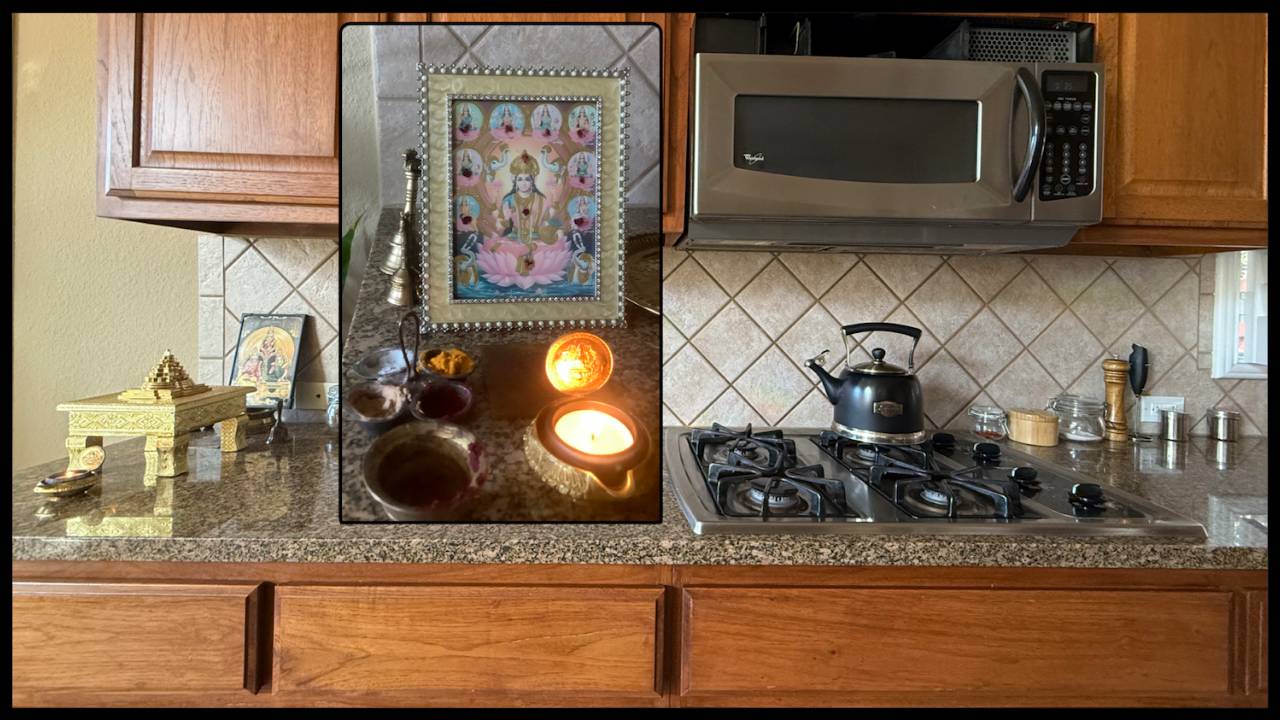Cooking With Mantras

There is a saying that the family that prays together stays together. One of the gifts in our family, just Asha and I, is her dedication to prayer and her commitment to preserving an atmosphere of sacredness in our home.
The kitchen is a space she is particularly mindful of. As a result, I believe we have cultivated something of a holy life, especially after leaving the monastery. Asha and I met in the monastery when I was a monk, and she became very close to our mentor, Beat Griffiths.
Even after our marriage, we spent about six months in the ashram as a married couple. The sensitivity of the ashramic way of life has always influenced us. However, there is something more at play.
There is the essence of India itself and the Hindu tradition, which embodies a prevailing sense of the sacred. Bede Griffiths defined the spirituality of India as inseparable from its culture, using the exquisite term "a sense of the sacred."
Griffiths noted that when he first arrived in Mumbai, formerly known as Bombay, he observed how the women moved with a remarkable ease. This stood in stark contrast to the formal, stiff attire and movements he was accustomed to in England. The fluidity and grace of the people deeply impacted him greatly. We can benefit from creating a sense of the sacred for ourselves because much of the Hindu tradition fosters a type of fluidity in our consciousness.
The practices of Hinduism alters the rigid boundaries between the visible and the invisible world. When done effectively, the sacredness of a home can transform our perception of these boundaries, lifting us out of the problems, concerns, and preoccupations of our daily existences.
It opens up a new dimension—a dimension of the sacred, not just as an idea, but as something tangible that we can experience. This feeling is often present the moment we enter a Hindu home, where living, cooking, eating, and sleeping frequently occur in the same space.
This extraordinary environment includes both the hearth—the place where cooking happens—and the home altar. Asha has always created this enriching atmosphere for us in our kitchen.
In Hindu tradition, the person in charge of the kitchen is seen as the embodiment of Lakshmi, the goddess of abundance. This could be anyone responsible for feeding the household, regardless of gender; they embody the qualities of the original harvest goddess.
Cultivating this sensitivity is essential. But how can we achieve this? Hinduism offers a rich vocabulary of gestures, sounds, movements, rituals, and the use of natural elements. In our yogic mystery school, we have developed an extensive language around Lakshmi Tantra and mantra practices over the decades.
However, this may feel overwhelming. Therefore, learning to cook with mantras and to eat mindfully with mantras offers a wonderful starting point. Food is consciousness. The food we consume shapes who we are and our consciousness. This principle lies at the heart of much of what Hinduism teaches, and it embodies what Asha represents.
With this understanding, I feel I am making a renewed commitment to life and to food. There is so much we can share, but this serves as an excellent starting point: cooking with mantras and, as a result, eating with mantras.
Click To Learn More About
COOKING WITH MANTRAS
When working with mantras—especially during meals—several key elements must be developed. Meaning is essential, and within it, there are various levels, particularly in Sanskrit. Pronunciation is another crucial aspect that many overlook. As someone dedicated to the Yoga of Sound, I see pronunciation as vital, supported by traditional views. Additionally, chanting quality, which relates to both pronunciation and our vocal technique, is important. Equally significant is the attitude of devotion; without it, even technically sound chanting feels incomplete. Conversely, excessive focus on devotion can detract from chanting quality, pronunciation, or understanding meaning.



